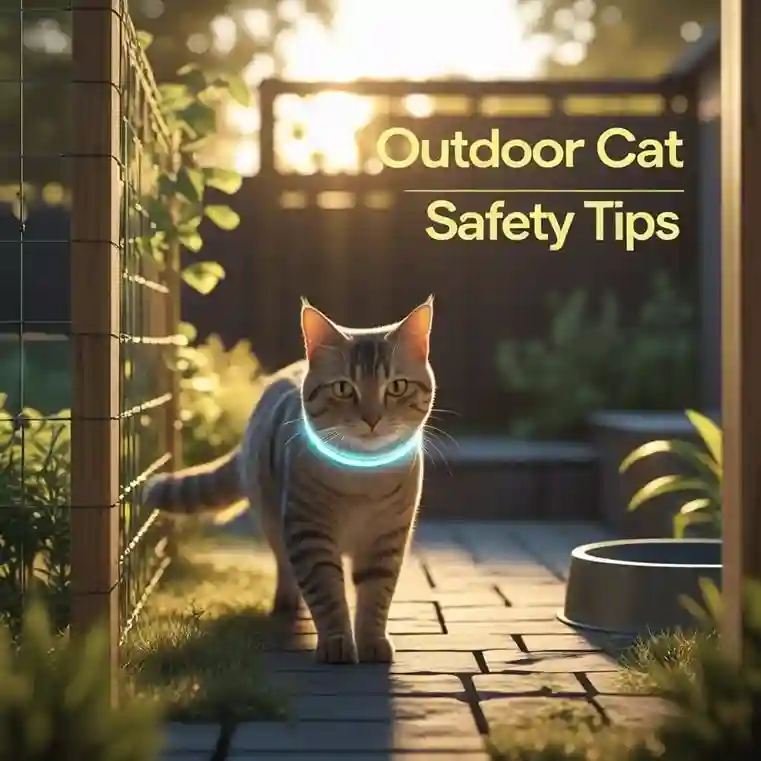Radial Hypoplasia in Cats is a congenital condition that captures the hearts of many pet owners due to its unique presentation and the resilience of affected felines. Often referred to as “twisty cats,” “squittens,” or “kangaroo cats,” these felines are born with underdeveloped or absent radius bones in their forelimbs, leading to distinctive physical characteristics and mobility challenges. Despite these differences, cats with Radial Hypoplasia can lead fulfilling lives with the right care and environment.
This comprehensive guide explores the causes, symptoms, diagnosis, and management of Radial Hypoplasia, offering practical tips and product recommendations to ensure these special felines thrive.
What is Radial Hypoplasia in Cats?
Radial Hypoplasia in Cats is a congenital defect affecting the forelimbs, specifically the radius bone, one of the two main bones in a cat’s front leg. The term “hypoplasia” indicates underdevelopment, while “radial” refers to the radius bone. In severe cases, known as radial aplasia or agenesis, the radius bone may be entirely absent, causing significant deformities. This condition results in shorter, twisted, or absent front legs, giving affected cats a unique appearance and gait. Cats with Radial Hypoplasia may walk on their elbows, hop on their hind legs like kangaroos, or exhibit a wobbling gait, earning them affectionate nicknames like “twisty cats” or “squittens.”
The condition is rare but highly distinctive, often becoming a point of fascination in the cat community. While Radial Hypoplasia can pose mobility challenges, these cats are known for their adaptability and resilience, often finding creative ways to navigate their environment. Understanding Radial Hypoplasia is crucial for owners and caregivers to provide the necessary support for a high quality of life.
Causes of Radial Hypoplasia in Cats
Radial Hypoplasia is primarily a congenital anomaly, meaning kittens are born with it. The condition can stem from two main causes:
- Genetic Mutation: Radial Hypoplasia may result from hereditary genetic mutations, particularly in certain breeds like the Manx or Scottish Fold, where the incidence is slightly higher. Breeders are advised against mating cats with Radial Hypoplasia to prevent passing the condition to offspring.
- In Utero Factors: Environmental factors during pregnancy, such as malnutrition or exposure to toxins, can disrupt fetal development, leading to Radial Hypoplasia in Cats. For instance, insufficient nutrition in the womb may impair bone development, resulting in shorter or absent radii.
While Radial Hypoplasia is not caused by external injuries post-birth, it’s essential to differentiate it from other conditions like cerebellar hypoplasia, which affects balance and coordination due to brain development issues rather than limb structure.
Symptoms and Identification
Recognizing Radial Hypoplasia in Cats involves observing distinct physical and behavioral signs, typically noticeable when kittens begin to walk or play. Common symptoms include:
- Twisted or Shortened Forelimbs: The front legs may appear shorter, twisted, or bent, sometimes resembling flippers.
- Unusual Gait: Cats with Radial Hypoplasia may walk on their elbows, hop on their hind legs, or exhibit a wobbling gait.
- Difficulty with Mobility: Tasks like jumping, climbing, or grooming can be challenging due to limited forelimb function.
- Polydactyly: Some cats with Radial Hypoplasia may have extra toes, adding to their unique appearance.
The severity of Radial Hypoplasia in Cats varies. Mild cases may involve slight deformities with minimal impact on daily life, while severe cases, such as radial aplasia, can significantly affect mobility. Importantly, Radial Hypoplasia is not typically painful unless complications like arthritis develop later in life.
Diagnosis requires a veterinary evaluation, often including physical examinations and radiographs (x-rays) to assess bone structure. Vets may also rule out other neurological or musculoskeletal conditions to confirm Radial Hypoplasia.
Caring for Cats with Radial Hypoplasia
Caring for a cat with Radial Hypoplasia involves creating a supportive environment tailored to their unique needs. With thoughtful adjustments, these cats can live happy, healthy lives. Here are key care strategies:
Home Environment Modifications
- Safe Flooring: Carpets or rugs provide better traction than slippery floors, reducing the risk of falls for cats with Radial Hypoplasia.
- Accessible Furniture: Low platforms, ramps, or pet stairs help cats reach favorite spots without jumping. The PetSafe CozyUp Folding Pet Steps available on Amazon are lightweight and sturdy, ideal for cats with mobility challenges.
- Stable Litter Boxes: Use a deep, high-sided litter box to support balance, such as the Catit Jumbo Hooded Cat Litter Pan on Amazon, which offers ample space and stability.
- Sturdy Feeding Stations: Heavy, non-tip bowls like the Y YHY Ceramic Cat Food Bowl on Amazon prevent spills, accommodating messy eaters.
Mobility Support
While there is no cure for Radial Hypoplasia, mobility aids can enhance quality of life. For severe cases, a custom Walkin’ Pets Cat Wheelchair (available on Amazon) can support both front and back legs, allowing cats to move freely without straining their limbs. Regular physical therapy, such as gentle stretching exercises, can also improve strength and coordination.
Health Monitoring
Cats with Radial Hypoplasia may develop arthritis or joint issues over time due to abnormal limb stress. Regular veterinary checkups are essential to monitor for degenerative joint disease and manage pain with medications if needed. Owners should also watch for skin abrasions on the forearms, as some cats may drag their limbs, causing irritation.
Emotional and Social Needs
Cats with Radial Hypoplasia are as affectionate and playful as their peers. Engage them with toys like the Petstages Tower of Tracks Cat Toy on Amazon, which encourages play without requiring intense physical effort. Providing mental stimulation through puzzle feeders or interactive games keeps these cats happy and engaged.
Success Stories: Cats Thriving with Radial Hypoplasia
Cats with Radial Hypoplasia often become beloved figures in the pet community due to their resilience. Take Tater Tot, a Highland Lynx with Radial Hypoplasia, who found a forever home with another RH cat, Roo. Despite underdeveloped front legs, Tater Tot plays, runs, and even climbs, showcasing the adaptability of these cats. Similarly, Little Buddy, featured on the Catwoods Porch Party blog, lived a full life with Radial Hypoplasia, proving that with love and care, these cats can thrive.
These stories highlight that Radial Hypoplasia in Cats does not diminish a cat’s ability to live joyfully. Owners who adopt RH cats often report strong bonds and admire their cats’ determination to overcome physical challenges.
Veterinary Insights and Management
Veterinarians emphasize that Radial Hypoplasia is a manageable condition with no impact on life expectancy. Unlike cerebellar hypoplasia, which affects neurological function, Radial Hypoplasia is strictly a skeletal issue. Surgical interventions are rarely recommended due to the complexity and limited benefits, but supportive care is highly effective.
For pain management, vets may prescribe anti-inflammatory medications or joint supplements like Cosequin for Cats (available on Amazon) to support joint health in older RH cats. Regular checkups ensure early detection of secondary issues like arthritis or skin abrasions.
FAQs About Radial Hypoplasia in Cats
What causes Radial Hypoplasia in Cats?
Radial Hypoplasia in Cats is caused by genetic mutations or in utero factors like malnutrition, leading to underdeveloped or absent radius bones in the forelimbs.
Is Radial Hypoplasia in Cats painful?
Under normal circumstances, Radial Hypoplasia in Cats is not painful. However, pain may occur if limbs are twisted during movement or if arthritis develops later in life.
Can cats with Radial Hypoplasia live normal lives?
Yes, with proper care and environmental modifications, cats with Radial Hypoplasia can live happy, fulfilling lives with normal life expectancy.
Are certain breeds more prone to Radial Hypoplasia?
Breeds like Manx and Scottish Fold may have a higher incidence, but Radial Hypoplasia can affect any cat.
How can I help my cat with Radial Hypoplasia move better?
Use mobility aids like pet wheelchairs, provide ramps or low platforms, and ensure non-slip flooring to support cats with Radial Hypoplasia.
Conclusion
Radial Hypoplasia in Cats is a unique condition that, while challenging, does not prevent cats from living vibrant, joyful lives. By understanding the causes, recognizing symptoms, and implementing tailored care strategies, owners can ensure their RH cats thrive.
From home modifications to supportive products like those available on Amazon, there are countless ways to enhance the quality of life for cats with Radial Hypoplasia. These resilient felines, with their adaptability and charm, remind us that every cat deserves a chance to shine, regardless of physical differences.
Sources



